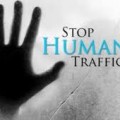 The 2018 Global Slavery Index has been released. The focus of the study highlights the connection between modern slavery and two major factors: highly totalitarian regimes, in which populations are put to work to prop up the government, and conflict situations which result in the breakdown of rule of law, social structures, and existing systems of protection.
The 2018 Global Slavery Index has been released. The focus of the study highlights the connection between modern slavery and two major factors: highly totalitarian regimes, in which populations are put to work to prop up the government, and conflict situations which result in the breakdown of rule of law, social structures, and existing systems of protection.
As has been previously reported, “modern slavery exists, it is widespread, and it is a worldwide, lucrative practice. A National Geographic study found ‘There are more slaves today than were seized from Africa in four centuries of the trans-Atlantic slave trade. The modern commerce in humans rivals illegal drug trafficking in its global reach—and in the destruction of lives.’”
A similar report previously issued last year by the International Labour Organization provided in depth information on 21st Century slavery. An estimated 40.3 million people were victims of modern slavery in 2016. “In other words, on any given day in 2016, there were likely to be more than 40 million men, women, and children who were being forced to work against their will under threat or who were living in a forced marriage that they had not agreed to. Of these victims: 24.9 million people were in forced labour. 15.4 million people were living in a forced marriage to which they had not consented.”
According to the 2018 Global Slavery Index “The country with the most significant slavery issue is North Korea.” In that nation, “one in 10 people are in modern slavery with the clear majority forced to work by the state. As a UN Commission of Inquiry has observed, violations of human rights in North Korea are not mere excesses of the state, they are an essential component of the political system. This is reflected in the research on North Korea undertaken through interviews with defectors for this Global Slavery Index. North Korea is followed closely by Eritrea, a repressive regime that abuses its conscription system to hold its citizens in forced labour for decades. These countries have some of the weakest responses to modern slavery and the highest risk.”
Following North Korea and Eritrea, Burundi, the Central African Republic, Afghanistan, Mauritania, South Sudan, Pakistan, Cambodia, and Iran were cited for the extensive use of slaves.
It would be incorrect to assume, however, that slavery was restricted to nations generally considered in conflict or at the bottom of the barrel when it comes to democracy. A key finding of the study is that “modern slavery in high-GDP countries is higher than previously understood, underscoring the responsibilities of these countries… Following these changes, an interesting pattern emerges: the prevalence estimates for the United States, Australia, the United Kingdom, France, Germany, the Netherlands, and several other European nations are higher than previously understood. Given these are also the countries taking the most action to respond to modern slavery, this does not mean these initiatives are in vain. It does, however, underscore that even in countries with seemingly strong laws and systems, there are critical gaps in protections for groups such as irregular migrants, the homeless, workers in the shadow or gig economy, and certain minorities. These gaps, which are being actively exploited by criminals, need urgent attention from governments.”
Unfortunately, more than half of the G20 countries have not adopted legislation aimed at stopping business and government sourcing goods and services produced by forced labor (Argentina, Australia, Canada, India, Indonesia, Japan, Mexico, Russia, South Africa, Saudi Arabia, South Korea, and Turkey). The exceptions are the United States, China, Brazil, France, Germany, Italy, and the UK, each of which has taken positive steps. Australia is scheduled to join those enacting relevant laws, in the latter half of this year.
Frank Vernuccio serves as editor-in-chief of the New York Analysis of Policy and Government.















Follow Us